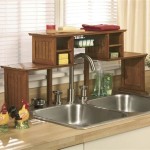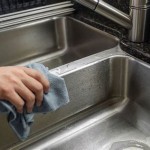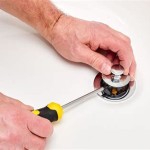Bathroom Countertops for Vessel Sinks
Vessel sinks, with their above-counter design, have become increasingly popular for adding a touch of elegance and modernity to bathrooms. Selecting the right countertop material to complement these statement pieces is crucial for both aesthetics and functionality. This requires careful consideration of various factors such as durability, maintenance requirements, and overall design compatibility.
Material Durability and Water Resistance
The countertop material's resistance to water and potential damage is paramount, especially with vessel sinks. Since the sink basin sits above the counter, water is more likely to splash and potentially seep onto the surface. Materials like granite, quartz, and marble offer excellent water resistance when properly sealed. These natural stones are highly durable and can withstand daily wear and tear. Solid surface materials, composed of acrylic or polyester resins, are also non-porous and provide a seamless look, minimizing potential areas for water damage. Laminate countertops, while a more budget-friendly option, require meticulous sealing to prevent water infiltration, which can lead to swelling and deterioration. Wood, though aesthetically appealing, requires consistent sealing and maintenance to prevent water damage and is generally less suitable for high-moisture environments.
Countertop Height and Sink Compatibility
The height of the countertop plays a significant role in the overall usability of a vessel sink. A lower countertop height may be required to compensate for the added height of the vessel sink itself, ensuring comfortable usage for individuals of varying heights. Careful planning is essential to achieve the correct ergonomic balance. The countertop's depth also needs consideration. With vessel sinks positioned above the counter, a deeper countertop provides more usable space and minimizes splashing. The chosen material should be thick enough to support the weight of the vessel sink and provide stability, especially for heavier materials like stone or glass.
Style and Design Considerations
Vessel sinks come in a wide array of styles, from sleek and modern to rustic and traditional. The countertop material should complement the sink's aesthetic and the overall bathroom design. Natural stone countertops like marble or granite offer a timeless appeal and can enhance the luxurious feel of a vessel sink. Quartz, with its engineered consistency and wide range of color options, provides a modern and versatile choice. Concrete countertops, gaining popularity for their industrial chic aesthetic, can create a striking contrast with a delicate glass or ceramic vessel sink. Wood countertops can bring warmth and a natural element to the bathroom, but require careful consideration of the sink style and the wood's ability to withstand moisture. The edge profile of the countertop also contributes to the overall design, with options ranging from simple eased edges to more intricate beveled or ogee profiles.
Maintenance and Cleaning Requirements
Different countertop materials have varying maintenance requirements. Natural stone like marble and granite needs periodic sealing to maintain its water resistance and prevent staining. Quartz requires less maintenance due to its non-porous nature and doesn't require sealing. Solid surface materials are also relatively easy to clean and maintain. Laminate countertops, while easy to clean, are more susceptible to damage if water penetrates the surface. Wood countertops require regular oiling or sealing to protect them from moisture and maintain their appearance. The cleaning products used should also be compatible with the countertop material to avoid damage or discoloration.
Cost Considerations
Budget is a crucial factor when selecting a countertop for a vessel sink. Materials like laminate and concrete are typically more budget-friendly options. Natural stones such as granite and marble are generally more expensive, with prices varying depending on the specific type and origin of the stone. Quartz countertops fall in a mid-range price bracket, offering a balance of durability and aesthetics. Solid surface materials are also a mid-range option with a seamless and contemporary look. The cost of installation should also be considered, as some materials, like natural stone, may require professional installation due to their weight and complexity.
Integration with Existing Bathroom Fixtures
The chosen countertop material should harmonize with the existing bathroom fixtures and overall design scheme. Consider the colors and styles of the flooring, cabinetry, and other bathroom elements when selecting the countertop. A cohesive design creates a sense of unity and elevates the overall aesthetic of the bathroom. If the bathroom has existing fixtures, ensure the chosen countertop material complements these elements. For example, a modern vessel sink paired with a sleek quartz countertop might clash with traditional, ornate cabinetry.
Are Vessel Sinks Still In Style The Lived Look
Countertop To Complement Your Must Have Vessel Sink
Vessel Sinks A Complete Guide Roomhints
Vessel Sinks On Wood Bathroom Countertops Custom Made By Grothouse
Bathroom Transformations Trends Stylish Vessel Sinks Granite Blog
Pros Cons Of A Vessel Sink
Vessel Bathroom Vanity Tops At Com
Bathroom Transformations Trends Stylish Vessel Sinks Granite Blog
Bathroom Vessel Sink Materials Pros And Cons Guilin Cabinets
Wood Countertops For Bathroom Vanities Addicted 2 Decorating







